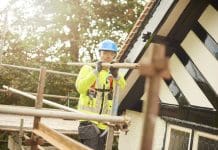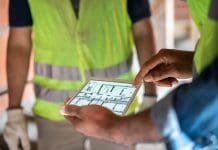A ban on combustible materials being used on new high-rise buildings and support to help councils remove aluminium cladding from private residences have been welcomed by local authorities – but fire chiefs have called on the government to do more
Regulations laid before parliament yesterday (29 November) would give legal effect to a ban affecting new buildings containing flats, as well as new hospitals, residential care homes and student accommodation, above 18m.
The combustible materials ban will also apply to schools over 18m tall built as part of the government’s centrally delivered build programmes.
Communities secretary James Brokenshire also announced that the government will back local authorities, including financial support if necessary, to enable them to carry out emergency work to remove ACM cladding from private residential buildings. The costs will be recovered from building owners.
“My message is clear: private building owners must pay for this work now or should expect to pay more later,” Brokenshire said.
The government is already funding the replacement of ACM cladding on social sector buildings above 18m.
The Local Government Association, which represents 415 UK authorities, welcomed the ban, saying that some private landlords have shown a “lack of urgency” in identifying buildings with cladding and insulation systems that have failed fire safety tests.
“The measures will therefore help councils take the steps necessary to ensure all residents in their local area are safe and feel safe in their homes, regardless of whether they own the block or not, and to ensure that a tragedy like Grenfell never happens again,” said LGA chairman Lord Porter.
However, Dan Daly, assistant commissioner of the London Fire Brigade, said that while he broadly supports the ban, more needs to be done.
“Banning cladding won’t make buildings safer unless you ensure that only properly qualified people can make decisions about how buildings are built and maintained. For example, you could strip a building of combustible cladding but a building owner can still make other alterations that could be just as dangerous,” he said.
“The London Fire Brigade has also been calling for residential tower blocks to be retrofitted with sprinklers and for sprinklers to be mandatory in all new school builds and major refurbishments. Sprinklers are the only fire safety system that detects a fire, suppresses a fire and raises the alarm. They save lives and protect property and they are especially important where there are vulnerable residents who would find it difficult to escape, like those with mobility problems.”
The National Fire Chiefs Council also supports the cladding ban but called for it to be extended to buildings of any height, saying the 18m threshold “is a historical height which does not reflect modern firefighting equipment and practices”.
“We hope the full review of Approved Document B the government has committed to will properly reconsider the appropriateness of the 18m threshold,” said NFCC chair Roy Wilsher.
“We believe the ban should extend not just to hospitals, care homes and student accommodation, but to all buildings that house vulnerable people, such as specialised housing.
“We look forward to the call for evidence on the full technical review of Approved Document B. We will also be calling for improvements to sprinkler requirements, firefighting access and other provisions needed to help make communities safer, such as technical requirements for fire hydrants.”
The NFCC is calling for sprinklers to be a requirement in all new high-rise residential buildings above 18m and for sprinklers to be retrofitted in existing residential buildings above 30m as part of their schedule refurbishment or immediately if they are served by a single staircase.













